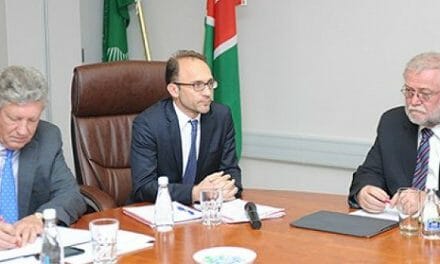
Land, water, money – where are we heading with our own water supply?

An investment discussion during the past week brought to the fore the issue of water.
To Namibians, this is arguably the single most important aspect of our lives. People who live in water-rich countries will not understand this, not even people who come from territories that are relatively dry, but inhabitants of other arid and semi-arid areas understand only too well why we always carry on about rain and groundwater.
An abundance of water is a blessing, at least from our perspective. A lack of water or a very erratic supply, is not necessarily a death sentence but it does require a unique existential disposition. If you always have to contend with the possibility that whole communities, towns and cities may run out of water, you tend to have a different take on life. You plan differently, you process differently and you use differently.
The integral importance of water in anything we do also have a bearing on how we run businesses, how we plan investments, and how we solve our own developmental problems as we go forward.
For instance, Namibia is not such a sparsely populated country for no reason. It all has to do with water or the lack of it.
This raises a very interesting, sometimes confounding, conundrum. If there is so much land and so few people, why is there so much conflict and opposing views over land?
The answer is simple: lack of water. The inference from this is staggering – solve the water problem and the land problem solves itself.
As much as we want to be an industrialised nation in about a zillion years, it will not happen until we solve the water issue first. If we want every Namibian to have his or her own patch of land, the moment there is more water available, that land patch gets smaller and smaller, ergo more and more people can generate their own sustenance from relatively small units of land.
Every mine that opens a new project requires water by the millions of litres. This is usually solved by extraction of groundwater or over the last couple of years, by desalination but the costs are prohibitive as all the mines that use desalinated water have found out to their chagrin.
It is easy to say “solve the water problem”, it is very hard to actually do it.
Water can be harvested in several ways – we have researched that for over fifty years, but it must be affordable for ordinary Namibians to make it usable as household water, and it must be dirt cheap, like rainwater, to use it for crop irrigation.
And this is where the investment angle kicks in.
African countries generally agree on the continent’s massive infrastructure backlog and are not intimidated by the enormous figures thrown casually around by large financing institutions when it comes to quantifying our needs for the next fifty years. But, with only a few exceptions, all these projections and calculations usually apply to countries or regions where the minimum rainfall is in the region of 500 mm per year.
In our case, we also need the investment in infrastructure, especially for water, but we need much more. We need equally impressive investments in R&D, not only how we should extract and use the water we have, but also how to do it on such a massive scale with such appropriate technologies that we can produce water for irrigation and still remain competitive with the crops we grow.
We sit with a whole ocean along one of our borders. That is an unlimited source of water, it must only be cleaned, and that is the catch. Right next to this huge reservoir is a huge desert where temperatures are high implying that evaporation is also high.
I am convinced that our long-term solution for making usable water from the ocean lies in evaporation and not in 18 bar high-pressure reverse osmosis. I am not saying conventional desalination can not be part of the mix, I am saying if we want to produce water cheap enough to make a substantial difference in what we plant, we have to go big with massive evaporative lakes, and we have to harvest that moisture in a collector at a very low cost, so that we can use it to grow the food we need.
But first, we must invest in the capacity to understand and solve the problem. In Namibia’s case, long-term investments in water R&D are just as necessary as long-term investments in physical infrastructure.










































